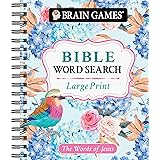Deciding between an Android tablet and an iPad can feel like choosing between two equally tempting paths, each promising a world of digital possibilities. As the lively debate in the video above highlights, both ecosystems offer compelling features, making the choice less about which is objectively “better” and more about which aligns best with your existing tech, workflow, and personal preferences. This perennial question vexes countless prospective buyers, from students seeking a versatile note-taking device to professionals requiring a portable productivity hub.
For years, tablets have been heralded as the ultimate convergence of smartphone portability and laptop productivity. Yet, the market remains primarily divided into two formidable camps: Apple’s iPad series, celebrated for its polished user experience and robust app ecosystem, and the diverse array of Android tablets, led by Samsung, which champion flexibility, customization, and seamless integration with the broader Android and Windows world. Unpacking their differences, beyond the surface-level specs, is crucial to making an informed decision that will serve you well in the long run.
The Great Display Showdown: AMOLED vs. Liquid Retina
One of the first points of contention in any tablet comparison often boils down to the display, which is, after all, your primary window into the digital realm. The video touches upon this with the “Man in Pink” touting the iPad’s ProMotion Liquid Retina display and the “Man in Yellow Shirt” counter-arguing with AMOLED technology. These aren’t just fancy marketing terms; they represent fundamentally different approaches to screen technology, each with distinct advantages.
1. AMOLED (Active Matrix Organic Light Emitting Diode): Often found in high-end Android tablets, especially from Samsung, AMOLED panels are renowned for their ability to produce true blacks by individually lighting pixels. When a pixel displays black, it’s actually turned off, leading to infinite contrast ratios. This results in incredibly vibrant colors, deep blacks that make movies and photos pop, and a more immersive viewing experience, especially in dimly lit environments. Think of it like a night sky where stars truly sparkle against a backdrop of absolute darkness.
2. Liquid Retina (LCD with ProMotion): iPads, even those with LCD technology (often referred to as Liquid Retina), are celebrated for their exceptional color accuracy and brightness. Many higher-end iPad models also feature ProMotion technology, which allows for adaptive refresh rates up to 120Hz. This means scrolling, gaming, and interactions feel incredibly fluid and responsive, almost like watching a high-frame-rate video where every movement is buttery smooth. While not achieving the same absolute blacks as AMOLED, iPad displays are expertly calibrated, making them a favorite for creative professionals who rely on accurate color reproduction for tasks like photo editing and graphic design.
Ultimately, the choice here depends on your priority: for dazzling contrast and eye-popping media consumption, AMOLED shines. For color-critical work and ultra-smooth interactions, the iPad’s Liquid Retina with ProMotion offers a highly refined experience.
Ecosystem Integration: The Seamless Symphony of Devices
The core of the video’s debate truly revolves around ecosystem integration, a feature that transforms a standalone tablet into a powerful extension of your computing environment. This is where the lines between Apple and Android truly diverge, often becoming the deciding factor for users already invested in one brand.
The Apple Advantage: A Closed, Harmonious Garden
For those already residing within Apple’s walled garden, the iPad offers an unparalleled level of synergy. As the “Man in Pink” enthusiastically demonstrates:
- Universal Clipboard: Copy text, images, or files on your MacBook, and paste them instantly on your iPad (and vice-versa). It’s like having one continuous clipboard stretching across all your Apple devices, eliminating the need for awkward email transfers or cloud uploads for simple data snippets.
- Handoff & Continuity: Start writing an email on your Mac and finish it on your iPad, or browse a webpage on your iPhone and pick up exactly where you left off on your tablet. It’s a testament to design coherence, ensuring your workflow isn’t interrupted when switching devices.
- Call & Message Continuity: Receiving a call on your Mac can be seamlessly transferred to your iPad, allowing you to walk freely while continuing the conversation, as highlighted in the video. Similarly, iMessage and FaceTime calls ring across all your devices.
- Instant Hotspot & AirDrop: Connecting to your iPhone’s hotspot from your iPad is a one-tap affair, and AirDrop makes sharing photos, videos, and documents with nearby Apple devices incredibly fast and intuitive.
- Sidecar & Universal Control: Newer iPads can act as a secondary display for your Mac, extending your desktop space (Sidecar). With Universal Control, you can use your Mac’s keyboard and trackpad to control your iPad, and even drag and drop files between them, treating your devices like a single, unified workspace. This goes beyond what the video briefly mentions about screenshot annotation; it’s a full-fledged collaborative canvas.
This deep integration acts like a well-trained orchestra, where every instrument plays in perfect harmony. If you own a MacBook, iPhone, or Apple Watch, an iPad often feels less like a new gadget and more like an essential missing piece of a larger puzzle.
The Android & Windows Bridge: Flexible Cross-Platform Connections
On the other side, Android tablets, particularly from brands like Samsung, excel in their ability to play nicely with a broader range of hardware, especially Windows laptops. The “Man in Yellow Shirt” makes a compelling case:
- Cross-Device Copy/Paste (Samsung Flow/Link to Windows): While not as universally integrated as Apple’s solution, Samsung Flow and Microsoft’s “Link to Windows” feature allow similar copy-and-paste functionality between Samsung tablets and Windows PCs. This extends to receiving notifications, making calls, and accessing your phone’s apps directly from your computer, bridging the gap between mobile and desktop productivity.
- Secondary Display Functionality: As demonstrated, many Samsung tablets can function as a secondary display for Samsung laptops and increasingly for other Windows PCs. This is a game-changer for productivity, allowing you to expand your workspace on the go. Imagine having your email open on your tablet while you’re working on a document on your laptop, effectively turning one device into two monitors.
- S Pen Integration: Samsung’s S Pen, bundled with many of its tablets, offers unique real-time drawing and annotation capabilities directly synced with your laptop. This is invaluable for designers, artists, or anyone who frequently annotates documents or brainstorms visually. The immediacy of seeing your stylus input appear on your larger screen is incredibly powerful, much like sketching on a digital notepad that instantly translates to your main canvas.
- Broader Device Compatibility: Android’s open nature means these tablets integrate well with various smart home devices, IoT gadgets, and accessories from different manufacturers, offering greater flexibility and choice without being locked into a single brand.
For users primarily rooted in the Windows and Android ecosystems, a Samsung or even a Xiaomi tablet offers a cohesive experience that leverages existing hardware without forcing a complete brand overhaul. It’s like having a universal adapter that works with most of your gadgets.
Stylus Power: Precision for Productivity and Creativity
Both ecosystems have embraced stylus input, transforming tablets into powerful tools for note-taking, drawing, and precise interaction. The iPad features the Apple Pencil, while many Android tablets, notably Samsung’s Galaxy Tab series, come with the S Pen.
- Apple Pencil: Known for its industry-leading low latency, tilt sensitivity, and pressure sensitivity, the Apple Pencil offers an incredibly natural writing and drawing experience. It feels remarkably like pen on paper, making it a favorite for digital artists, illustrators, and students who handwrite notes.
- S Pen: Samsung’s S Pen is equally impressive, often included in the box with Galaxy Tabs (unlike the Apple Pencil, which is a separate purchase). It boasts similar levels of pressure and tilt sensitivity, excellent palm rejection, and unique software features like Air Actions (gesture controls) and quick translation tools. The S Pen’s integration with Samsung’s ecosystem for real-time drawing on a connected laptop is a standout feature.
For creative professionals or anyone who values a precise input device, both offer compelling experiences. The distinction often comes down to the specific apps and creative suites you prefer, as each platform has its strengths.
Beyond the Surface: Software, Apps, and User Experience
While hardware is important, the software defines the daily user experience. Apple’s iPadOS is renowned for its polished interface, strong app optimization, and robust security. Apps on the App Store are generally designed to take full advantage of the tablet’s larger screen, offering a consistent and high-quality experience. Multitasking features like Split View and Slide Over are intuitive and powerful, allowing users to run multiple apps simultaneously with ease.
Android tablets, on the other hand, offer unparalleled customization. You can change launchers, widgets, and themes to truly make the device your own. While Android’s tablet app ecosystem has historically been less optimized than iPadOS, it has improved significantly, especially with specific tablet-focused UIs like Samsung’s DeX. DeX allows Samsung tablets to transform into a desktop-like environment, complete with resizable windows and a taskbar, offering a PC-like experience for productivity tasks.
Making Your Choice: Which Tablet Ecosystem is For You?
The “Man in Pink” offers a concise summary: if you’re deeply entrenched in the Apple ecosystem with a MacBook, an iPhone, or other Apple devices, an iPad is likely the most logical choice. The seamless integration, universal features, and consistent user experience will greatly enhance your existing setup. It’s like adding another perfectly matched piece to an already intricate puzzle.
However, as the “Man in Yellow Shirt” concludes, for everyone else—especially those with Windows laptops or a preference for the open nature of Android—a Samsung tablet, or even a value-oriented Xiaomi tablet, offers compelling advantages. This includes flexible integration with Windows, the versatile S Pen, and the power of choice in hardware and software customization. An Android tablet becomes a versatile bridge, connecting your mobile world with your desktop environment without being confined to a single brand. Whether you prioritize deep integration within a singular ecosystem or broad compatibility across various platforms, the decision between an Android tablet vs iPad hinges entirely on your current tech landscape and how you envision your digital life unfolding.









